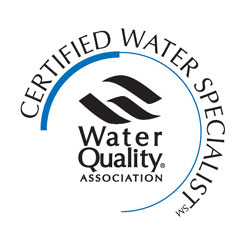 The three-year transition period for the Reduction of Lead in Drinking Water Act, enacted on January 4, 2011, will end on January 4, 2014, at which time all of the changes will become law.
The three-year transition period for the Reduction of Lead in Drinking Water Act, enacted on January 4, 2011, will end on January 4, 2014, at which time all of the changes will become law.
The Act covers the use and introduction into commerce of lead pipes, plumbing fittings or fixtures, solder and flux. In anticipation of these changes, the U.S. Environmental Protection Agency (EPA) has released a summary of the requirements of the lead ban provisions and some answers to frequently ask questions regarding the law.
WQA urges its member companies to seek legal counsel for all compliance-related questions that are not explicitly addressed in the information or references from the EPA provided below.
Here are some additional points to keep in mind:
- Applicability Point-of-use and point-of-entry devices are subject to the Act’s requirements. However, standalone, non-plumbed appliances or devices are not. The requirements of the law apply to residential and nonresidential facilities with plumbing that supplies water for human consumption, except for pipe that is used in manufacturing or industrial processing. Any device installed prior to the Act’s effective date—January 4, 2014, will be granted “grandfather” status. Pipes, fittings and fixtures installed prior to the effective date may also be repaired without losing said status. Provided that the piece remains in place, or is returned to the same location after being temporarily removed for repair, it will remain exempt from the provisions of the Act.
- Calculating Lead Content The Act defines a product as “lead-free” if it contains lead levels no higher than 0.25%. Solder and flux are evaluated separately and cannot exceed 0.2% in lead content. The average lead content in a product is calculated as follows: for each wetted component, the percentage of the lead in the component is multiplied by the ratio of the wetted surface area of that component to the total wetted surface area of the entire product. The weighted percentage of lead from each wetted component is added together, and the sum of these weighted percentages constitutes the weighted average of lead content in the product.
Additional Resources To review the US EPA’s summary and FAQs in full, please visit http://water.epa.gov/drink/